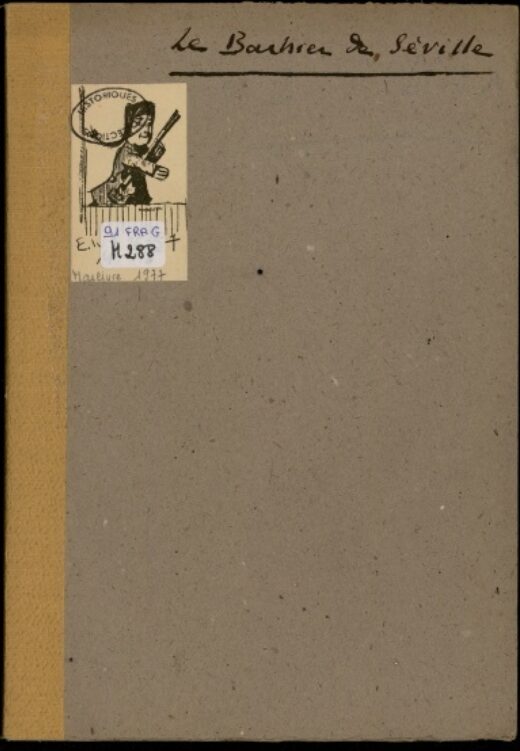
Typed or electronic text with handwritten annotations
25 pages
Le Barbier de Séville
According to Marcel Temporal – the puppeteer who catalogued the plays from several Guignol theatres in Lyon – a parody of the Barber of Seville was staged at the Théâtre Guignol in Passage de l’Argue in Lyon, sometime around 1910. Another one would have been put on at the Théâtre Guignol in Quai St-Antoine. But a printed booklet from 1877 also includes the Vers de Guignol dans le Barbier de Séville : parodie par P. A. et J. B. jouée au Théâtre Guignol de la Galerie de l’Argue (Guignol verses in the Barber of Seville: a parody by P. A. and J. B. staged at the Théâtre Guignol of the Galerie de l’Argue).
This typewritten document is part of the donation made by the Temporal family to the Internation Puppetry Institute. It takes up the text used in Passage de l’Argue, with slight modifications.
The plot of the play closely follows that of Beaumarchais’ homonymous comedy, but it simplifies it. Don Bartholo also becomes Gnafron, and Figaro becomes Guignol. Although the situation and the language spoken in the play are slightly more modern, Guignol and Gnafron talk in alexandrines on several occasions, and intersperse it with local idioms from Lyon.
Two young people manage to marry thanks to a cunning barber
Gnafron lives is Seville and is a very jealous old man who wants to marry his young ward Rosine without her consent. He takes many precautions so that no one can approach Rosine – save for her singing teacher, Don Basile, a friend of Gnafron. With the help of the barber Guignol, the count Almaviva manages to meet with Rosine. He confesses his love for her by pretending, first, to be a drunken soldier, then Don Basile’s student. A series of misunderstandings follows, so serious that, with the support of Guignol and of the notary, Rosine and Almaviva marry. Gnafron is enraged and Guignol, the mischievous barber, takes advantage of the opportunity to remind Gnafron that precautions are useless against love.
First performance
Théâtre Guignol du Passage de l'Argue